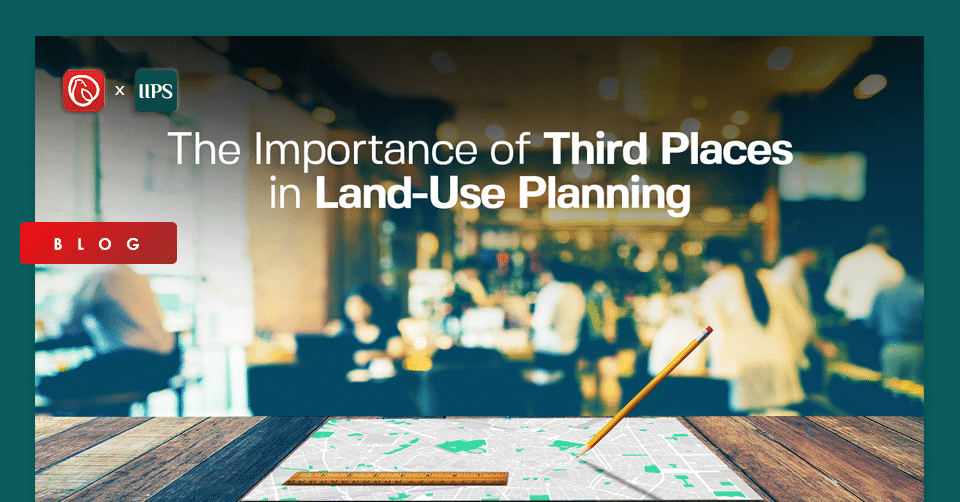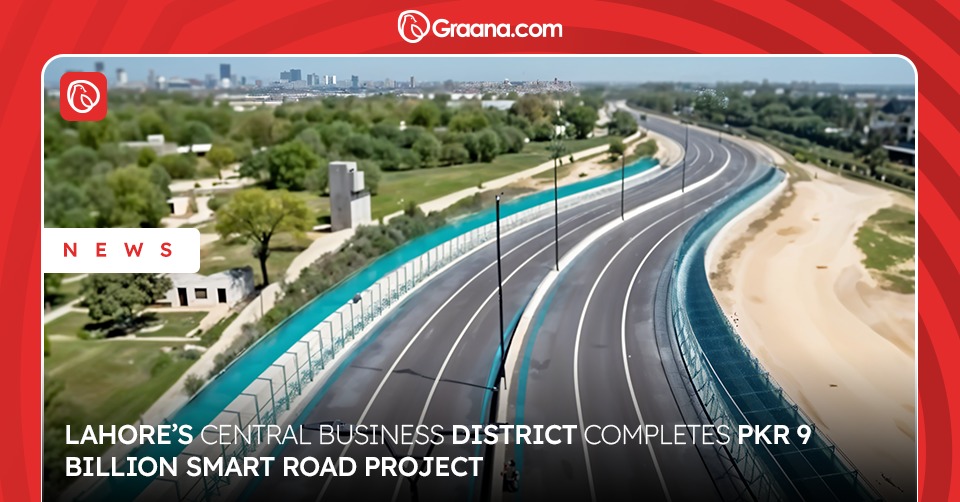The term ‘third place’ was coined by the sociologist, Ray Oldenburg, and refers to places where people spend time between home (first) place and work (second) place. These are locations where people exchange ideas, have a good time, and build relationships. This blog by Iqbal Institute of Policy Studies (IIPS) presents the importance of third places for different social groups and how it impacts individuals of different age groups in social cohesion and sustainability. The blog will also highlight the importance of third places in land use planning and how they are increasingly becoming vital. Lastly, the blog will discuss how Pakistan can incorporate third places in its land-use planning and the subsequent impact it will have on the future sustainability of cities.
Research Questions
- What are third places and their characteristics?
- What is the significance of third places in Land-use planning?
- How third places impact social groups?
- How does Pakistan utilise third places?
- How to improve third space utilisation?
Introduction
Older cities are struggling with issues of survival and focus more on jobs and economy, but all cities should pay attention to the quality of life individuals live to attract more and more residents. No matter how much one likes their home or work life, everyone needs a place to hang out and connect socially with other people. Land use planning helps communities create a sustainable, vibrant, and healthy environment by effectively utilising space for a variety of different objectives. Planning efforts to reinvigorate urban centres now include steps to create third places, places separate from work and home, which cultivate essential social experiences. The younger generation is increasingly experiencing life in virtual spaces and connections, and the elderly are at risk of being cut off socially. That is attracting attention towards third places in land-use planning. Pakistan is a vibrant society with a majority of its population under the age of 29. People need places to relax and socialise in order to promote social sustainability and generate social capital and civic engagement. Therefore, land-use planning must include a third place as a significant factor in planning cities and urban centres.
Third Places: Qualities and Characteristics
The term ‘third place’ was coined by a sociologist, Ray Oldenburg, and referred to places where people spend time between home (‘first’ place) and work (‘second’ place) (Butler & Diaz, 2016). They are locations where people exchange ideas, have a good time, and build relationships. Such places must offer a neutral ground for the masses and allow people with diverse backgrounds to collaborate and meet without any bias or distinctions. Conversations are key to building social relationships and exchanging ideas, and a levelling place open to all demographics can provide a better and richer conversation experience. A third-place also needs to feel like a home away from home with accessibility and accommodation being always vital to the experience. Regular participation is also important as the right people are needed to make any place come alive. Older people are at particular risk of being cut off socially. Therefore, third places must provide for an environment which caters to the needs of the elderly such as transportation and medical facilities. Lastly, third places need to be free or inexpensive at best, as most of the population cannot afford to spend their daily time in places which cost a lot of money.
Significance of Third Places in Land-use planning
As societies continue to grow and expand, effective utilisation of space for various purposes becomes increasingly important. Land-use planning enhances the viability, livability, and affordability of residential neighbourhoods. It also balances open spaces and environmental preservation. As cities continue to grow and focus more on jobs and the economy, social sustainability, as an independent perspective of sustainable development, has gained some acknowledgement, becoming an essential aspect in sustainable urban planning. However, there is a limited study on the promotion of social sustainability in urban areas. Third places are now increasingly becoming an integrated part of urban planning for social sustainability. Three approaches are mainly used in planning for third places: the place-making approach, which focuses on movement patterns and connectedness to surroundings. The lively planning approach, which focuses on a sociable stage and attraction elements. And lastly, the green urbanism approach focusing on the economic, environmental and social perspectives of sustainable development (Cilliers & Goosen, 2018). Modern and highly developed societies are becoming increasingly dynamic, and therefore, land-use planning must incorporate the social and economic issues people face in their day to day lives. Societies want their environments to be a reflection of their needs and preferences.
Impact of Third Places on Social Groups
As the world’s major urban centres compete for young professionals and entrepreneurs, it is increasingly becoming important that unique attractions and leisure activities are present to attract more professionals. It is increasingly important to have proper socialisation opportunities to attract the “creative class” of individuals such as writers, entertainers, artists, and engineers who are key to urban regeneration. These young individuals are not only highly educated but also versatile and attracted to environments that are easy to go and provide opportunities for leisure and high quality of life.
Another consideration which is promoting mental health professionals to advocate for public spaces is the increased use of social media and virtual communication. Since individuals are becoming increasingly isolated in homes and confined to electronic devices for communication with the outside world, there is an increasing risk of development of feelings of inadequacy, dissatisfaction, and isolation. Third places can be used to counter the growing impact of the social media bubble by providing people with the opportunity to interact physically with other individuals. Sharing of experiences and light chatting is a great way to release work and home tensions. Third places work as stress relief agents and provide for a feeling of inclusiveness and belonging. Therefore, the impact of third places is significant for the younger generation.
The elderly are at a higher risk of feeling isolated in their homes as mobility becomes an issue with increasing age. Older people are generally more prone to live a sedentary lifestyle in their homes without socialising or any proactive engagement with peers and friends. Third places impact the lives of the elderly by providing them with an opportunity to socialise and maintain healthy relationships. This not only improves the chances of their mental health and stability, but it also provides for something to look forward to in their daily lives. Therefore, third places are an important consideration in catering to the needs of the elderly.
How Pakistan Utilizes Third Places
A third place is usually an anchor for the community as it holds the whole society together in forms of meaningful relationships and social interactions. Pakistan is a diverse and vibrant society with individuals from ethnic and religious backgrounds. Integration and social cohesion have been a major consideration for the Pakistani government. Pakistan has a variety of spaces which serve the purpose of third places such as malls, public parks, small restaurants, cafes, movie theatres, coffee shops, gyms, libraries, and places of worship of different communities. According to (Ahmed, 2018) shopping malls in Pakistan’s major cities such as Lahore, Karachi, and Islamabad have a daily footfall of visitors between 30,000 to 35,000 on average. A variety of public parks are also present in almost all of the major cities in Pakistan, which provide ample space for leisure activities and interactions among people in public events and sports activities. According to (UNDP Pakistan, 2016), Pakistan has a staggering sixty-four per cent youth population. It is not therefore surprising that spring of small cafes and restaurants can be seen in all the major urban centres. According to Shaikh et al. (2018), Pakistani’s are now spending in excess of Rs. 114 billion on eating out annually and this shows a growing need and interest for sociable spaces. Lastly, Pakistan also hosts a vast number of places of worship belonging to different communities. These places of worship serve a dual purpose as a significant number of people socialise and spend their time besides only worship. Third places are an essential part of Pakistani culture, and the number of people utilising such spaces for their social interactions is increasing on a daily basis. Keeping in mind the young population, Pakistan needs to focus on land-use planning to incorporate its people’s needs and requirements.
Suggestion to Improve Third Spaces in Pakistan
Urban planners can take many steps to improve third space utilisation in Pakistan. Zoning laws should accommodate for third places keeping in mind the multifunctionality of land. Transport is another major area that needs to be improved by incorporating stops over shorter public transport distances. This will allow people to commute easily without depending on cars and motorbikes. Provision of free internet facilities can also motivate the public to use third places more often. Revamping architecture in public spaces to enhance interactions between people is another step which can increase social manoeuvring. Restaurants and cafes can allow people to use their restrooms and sit down at tables without buying anything, eventually making them public spaces. Barriers to entry in public places should be removed for easier access to the public. Efforts should also be made to incentivise local businesses to provide for more social events. Lastly, third places have seen a considerable decline in the number of visitors due to the COVID-19 pandemic. Future planners should also take into consideration the impacts of the global pandemic on land-use planning, and how to make future cities more sustainable. All in all, if land-use planning incorporates third place utilisation, it has great potential to contribute towards social sustainability and cohesion.
Conclusion
Although jobs and the economy are significant considerations for urban planners, focusing on social sustainability will allow cities to attract more talented professionals and residents. Third places fulfil the human need to socialise and create one-on-one connections with other people to provide a base for a healthy society. Certain characteristics, if present, can make the utilisation of third places more effective. Although the society in Pakistan readily utilises third places for gatherings and different forms of social interactions, steps can be taken to improve the environment by making it more accessible to the older age group and safer for women and children.




